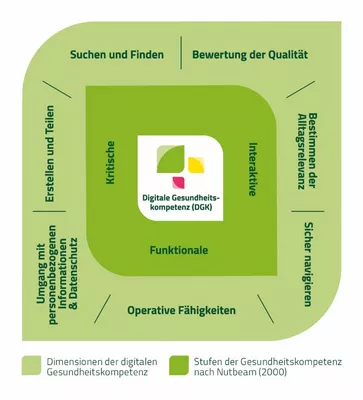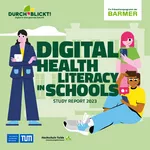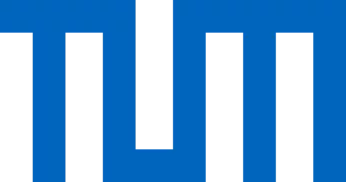Digital health literacy in schools
The research consortium on digital health literacy in schools ‘DURCHBLICKT!’ was launched in 2022. Funded by Barmer until 2024, the TUM health literacy research group led by professor Orkan Okan is working together with a research group from Fulda University of Applied Sciences in order to investigate the state of digital health literacy in the school setting for the first time in Germany. The focus of research is the digital health literacy competencies of students and teachers.
In the project, questionnaire-based and representative data surveys will be conducted. In addition, a digital situational analyses tool will be developed to assess the schools` progress regarding digital health literacy and support schools to become a health literate school. An online platform for students, teachers, and parents will provide materials and information to strengthen their digital health literacy.
Growing up and working today is more than ever characterized by digitalisation and an overload and variety of information. The Covid-19 pandemic has significantly increased the amount of information and catalyzed the dynamics regarding the creation, supply, provision, and dissemination of health information. Mobile devices allow immediate and time-unrestricted access to information on health topics available on the Internet almost limitless. At the same time, people are not only consumers of information, but also producers of information. They create content, share it, refer to existing content, and interact with others, especially through social media. However, the abundance and diversity of digital health information in particular also increases the demands on users. People must be able to deal appropriately with these information offerers and navigate digital worlds safely. This is why people today increasingly need health literacy. Digital health literacy is a sub-branch of health literacy and describes the abilities needed to find, understand, assess, and apply health information via digital sources. It allows people to deal with digital communication technologies appropriately in everyday life and for their health care. At the same time, health literacy can also be divided into three distinctive areas: (1) functional, (2) interactive and (3) critical health literacy.
functional health literacy: basic skills such as reading, writing, understanding
interactive health literacy: communicative skills to interact with others
critical health literacy: ability to critically analyze information and act on health determinants
Digital health literacy includes seven sub-dimensions, which at their core map the three overarching domains of functional, interactive and critical literacy:
- operational skills: basic ability to use digital devices (e.g., PC or keyboard) and web applications (e.g., navigating the Internet)
- navigational skills: Ability to use the Internet in a way that allows answering health-related questions (e.g., keeping track of a website)
- search and retrieval: Ability to perform a search query or select relevant hits
- creating and sharing: Ability to formulate and express concerns in digital form
- assessing quality: Ability to critically evaluate health-related information for quality and credibility
- determining relevance: Ability to decide whether information applies to an individual and is useful in making one's own health decisions
- data protection: ability to handle personal data securely and to assess the security of media providers

The link below will take you to the project's website.
Project lead and contact
Prof. Dr. Orkan Okan (project lead)
Denise Renninger, M.Sc. (research fellow)
Lisa Stauch, M.Sc. (research fellow)





